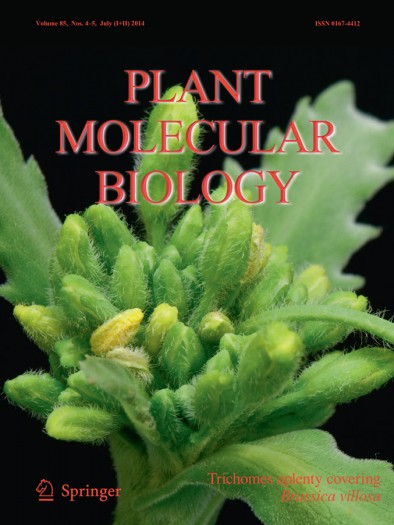My images appear on the front cover of magazines, books, corporate reports, calendars, phone books, and even lottery tickets. Now I can include a new item on the bragging list, a front cover of the scientific journal Plant Molecular Biology.
Some time ago a co-worker asked me if I could help him take a few pictures of the plant subject he has been studying. The model in question was a wild relative of the common canola crop widely grown across the Canadian Prairies. This particular species, Brassica villosa for people who care about scientific names, has very dense trichomes (plant hairs) and strong resistance to many insect pests that like to munch on canola and vegetable crops.
Trichomes, or plant hair cells, act as a natural barrier to plant predatory insects. They also act as a mechanical barrier that assist plants in reducing dehydration. Brassica villosa is a wild species growing on the limestone cliffs and rocky mountain slopes of Sicily, Italy. It is particularly hairy; someone actually counted that there could be over 2,172 trichomes per square centimetre. They cover all parts of the plant. Insects find this species prickly and avoid eating them. So, a research group at the Agriculture and Agri-Food Canada decided to study this species and try to figure out how the trichomes are formed, and if this characteristic could be bred into the commercial canola crops and related vegetables. Growing hairy canola would increase natural resistance to pesky insect and allow for reduced amount of pesticides that are regularly applied to crops every year.
We took a few close-up images in the greenhouse showing the plants and all the hairy details. After the manuscript was submitted for publication, journal editors asked if we could submit images for a possible cover. At the end, this image was selected and used. Pretty cool, don’t you think?

